by Charles Naas
The negotiations last week in Geneva over Iran’s nuclear program — the second effort since the June election of President Hassan Rouhani — stumbled at the final session and will resume later this month. The first serious break among the 6-world power P5+1 team apparently occurred when the French objected to some of the sections in the agreement. Nevertheless, Secretary of State John Kerry plans to go before the relevant bodies of Congress to start the very difficult task of convincing them that the current draft, which involves a first step of six months to test Iran’s willingness and ability to control its domestic opponents to any agreement is a safe and secure breakthrough on this matter. The basic outline of an agreement has been clear for some time, but the US Congress, Iran’s radical right and the fervent opposition to any agreement by Israel have not allowed either side much, if any, flexibility. (See Marsha Cohen’s recent piece on the divisions within the Israeli Government.)
In fact, after over 30 years of deep distrust the stars may be aligned between the West and Iran to start the long and very difficult process of normalizing relations. The new Iranian team, with the support of Ayatollah Ali Khamenei and, so far, Iran’s security organizations, has moved quickly on a number of fronts to see whether a nuclear agreement is possible. It has made a special effort to convince the Obama administration that there has been a major change of tone in Tehran with respect to the negotiations and its view of the United States. Rouhani took the unprecedented step of greeting the Israelis on Rosh Hashanah. Unsure of what all this entails, the US has conceived an agreement on a first step to be followed by a final settlement — if all goes well in the six month testing period. These developments raise a number of important questions, including: why has Iran now accepted that the US has an important role with respect to its position regionally and further abroad?
The primary incentives for Iran are undoubtedly some early sanctions relief, an effort to prevent more sanctions by the US Congress and the eventual removal of all economic restrictions. Over the decades, Iran has undoubtedly found ways to import denied goods and has learned to produce domestically some former imports. But, the hits its taken due to sanctions — particularly through foreign exchange and international banking restrictions and the prevention of vital imports such as medicines and raw materials — has caused it great suffering. It currency, the rial, resembles the post-WWI German Marks. However, Iran has endured sanctions until now and sanction relief would not be sufficient to force it to give up its basic rights to enrichment and a peaceful nuclear power program. Rather, a convergence of regional, foreign and domestic developments underlie the present marked improvement in the tone emanating from Tehran.
The election of Rouhani is a resumption of the leadership of Iran’s more moderate “reformist” tendency and is in line with Presidents Rafsanjani, Khatami, and, earlier, Prime Minister Mousavi. The eight years of Ahmadinejad were internationally and domestically pretty much a dead loss for the country as he added to the friction with Israel and most of the western world. His economic policy, to the extent he had one, was populist with little understanding of broad economic factors. Before assuming the presidency his understanding of foreign matters was strictly limited. In contrast, Rouhani was educated in Scotland and Mohammad Javad Zarif, his active Foreign Minister, was educated in the United States; both have had extensive foreign policy experience. They are comfortable with foreigners and, as importantly, with themselves. The election of Rouhani was in itself strong evidence that the Iranian people hope for change as long as Iran’s interests are protected. The Revolution was too costly to give away what the clergy and its supporters struggled so hard to achieve. This peaceful election was proof that counter-revolution was interred for now. Zarif has noted his objective is to conclude the talks with an agreement within a year and then to move on to other matters of mutual concern. The draft 2003 agreement of which Zarif was the principal drafter of has the substance of where he hopes to go.
In his long period as the Leader, Khamenei has permitted Presidents and other officials considerable latitude in policies. What he has not allowed is any challenge to the Republic’s existence or nature of its government. Mir Hossein Mousavi was seen as joining the extremists for change that could have undermined the state and has been shunted out of politics. Rouhani has been a part of the inner circle for many years and has earned the Leader’s confidence.
Perhaps after the satisfaction of winning Iran’s presidential election by a majority of the Iranian people, the leadership took stock of Iran’s position regionally and internationally. There are some plusses in this area but several serious worries, too. The principal satisfaction is the US departure from Iraq and the scheduled end of its combat role in Afghanistan. Under Obama, the US is less intrusive. Yet, all is not positive for Iran, which now contends with an unstable Iraq and the rise again of a number of Salafist Sunni groups. The Taliban threatens to become a major factor to the east again, and in the southeastern region, the new government continues to face a minority insurrection. The Shi’a in Pakistan are the frequent victims of violence by Sunni extremist organizations and in Afghanistan, the large Hazara population suffered during Taliban rule and undoubtedly will face it again. Thus, while Iran does not face existential problems beyond its Eastern borders, they are nevertheless very worrisome. The one country with common concerns and possibly the ability to be of assistance is the United States.
The Arab Spring has affected Iran’s role in the area considerably. From Iraq to Libya, the rise of Salafist governments and movements have become threats to Iran’s ability to carry on normal intercourse. Just a little more than two years ago, a stable Syria, ruled by the Assad family, provided a near right of passage for Iranian military aid to Hezbollah, which Iran has viewed as its small strategic counterpoise to Israeli threats to Iran’s nuclear power facilities. Today, the rule of Assad and the Alawite Shi’a minority is increasingly in doubt; Iran has pragmatically accepted this and is ready — if invited — to join the Geneva conference. Invitations must be approved by both the US and Russia. Added to all these difficult issues is the question of what happens to Iran’s Kurds at a time when Syria’s and Iraq’s Kurdish population are gaining greater self-rule.
Encompassing these problems for Iran’s new leaders is its general isolation and the widely held view of Iran as a pariah state, a perpetrator of terrorism with nuclear ambitions. It can be safely conjectured that Iran is uneasy without a countervailing power to the increased reliance on Russia, its historical opponent. The Arab states are all Sunni majority and aiding the Syrian rebels. Israel is an existential threat, the western countries have joined the sanctions regime (either that of the UN Security Council or those of the US) and many do not have diplomatic relations or a presence in Tehran. For at least the foreseeable future, key decisions on sanctions and diplomatic acceptability will be strongly influenced by the US. Historically, Iran’s diplomats have been pragmatists regardless of ideological thought and some 30 years since the revolution may now be turning back to practical ways to defend the nation’s security in an uncertain future.
The US has perhaps this one opportunity to put aside — with great caution — the decades of distrust and move step by difficult step to see just how far Iran’s new openness will take us. There actually is little to lose. But, we have to expect Iran to persist that it has rights under the Nuclear Non-Proliferation Treaty (NPT) to a full peaceful nuclear program including enrichment. We may have to swallow hard, accept the Iranian position in principle, but agree on a variety of restrictions and inspections that provide security against a nuclear weapon.
Photo Credit: FARS News/Majid Asgaripour

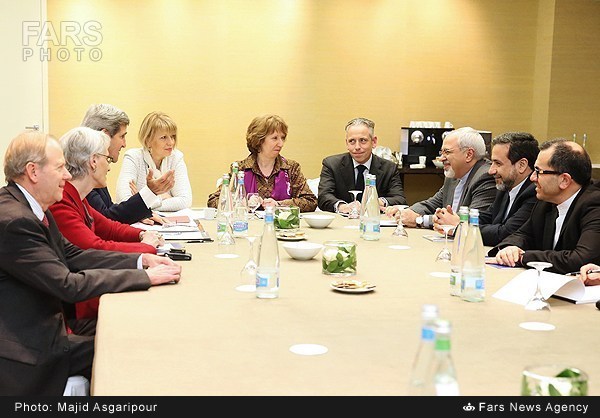
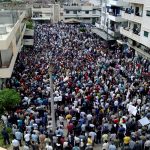
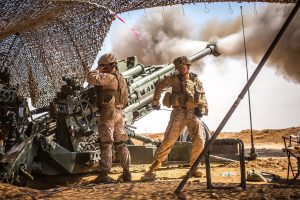
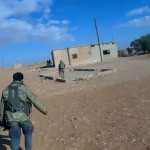
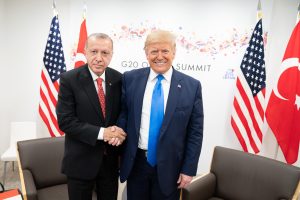
Interesting article. How did we ever get here? One thing seems quite certain, WAR isn’t the answer. One only has to look at Afghanistan, Iraq, Libya, Syria, to see how much benefit was created, not to the people of those countries, but to the weapons manufacturers and any number of businesses that flourished aiding and abetting the effort. This may well be “O”‘s Nixon moment, re: China. I don’t understand why Israel has a voice here, because they will never be satisfied, will always ask for the impossible, and when it comes to be their turn to eliminate their WMDs, Good luck. The U.S. Congress needs to step back from their zealous devotion to Israel, realizing that continuing to do so, isn’t in the interests of gaining a solution to the problem at hand. The Genie is out of the bottle, isn’t going to go back in, no matter what.
This article provides a helpful and comprehensive account of Iran’s motivations for turning to the West and particularly to America. However, it should also be pointed out that a US-Iranian rapprochement also benefits the West, and the United States in particular.
After all the sacrifices both in blood and treasure in Iraq, America has left behind a country where terrorism is again rife with many hundreds killed every month, with Iraqi Kurdistan becoming a semi-independent region, and with the possibility that the activities of jihadi fighters from Syria will split the country apart. If Iran were persuaded to play a constructive role in Iraq it would help the United States to improve her legacy there.
The same is true about Afghanistan. While the resurgence of the Taliban in Afghanistan would pose a threat to Iran it would also nullify the result of 13 years of US involvement in that country. A friendly Iran could help stabilize Afghanistan and also help with the withdrawal of US forces from that country.
An Iran with nearly 80 million mainly young and educated and largely pro-Western population, with the largest gas deposits and the second largest oil deposits in the world, also acting as a corridor between the Persian Gulf and Central Asia, will provide an enormous market for US goods and services as it did under the late Shah, and can reduce dependence on the energy resources of less stable states.
The Arab uprisings might have affected Iran’s role in the region, but they have been more detrimental to the West, with the loss of some former allies, such as President Mubarak and President Ben Ali, and presumably more to come. The rise of militant, terrorist Sunni groups in Syria and Libya is likely to spread even to the Persian Gulf countries that are supporting them, and may engulf the entire region in turmoil for a long time to come. It is in America’s interest to mitigate the consequences of that development because a major Sunni-Shiite confrontation, especially in Persian Gulf countries with sizeable Shiite minorities, will threaten energy security.
Above all, a rapprochement between Iran and the United States is likely to improve the dreadful human rights records of the Iranian government and help with the evolution of democracy there. An Iran that is friendly to the West and has an incentive in cooperating with the West is more likely to observe human rights and to pursue a more moderate regional policy than an isolated and threatened Iran. In many ways, both Iran and the United States need each other more than ever before.
Any restart in nuclear negotiations must include human rights considerations. As a party to several human rights treaties and as a Member State of the United Nations, Iran is legally obligated to protect the civil, political and religious rights of its citizens. Since the Iranian Revolution in 1979, Iran has been involved in large-scale abuses of human rights, including systematic persecution of religious minorities and severe restrictions on the freedoms of expression and assembly. Iran needs to be held accountable for its acts and behavior.